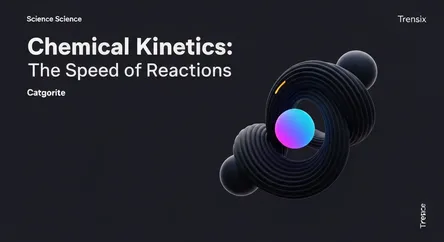Science
Chemical Kinetics: The Speed of Reactions

An introduction to chemical kinetics, the science of chemical reaction speeds and the factors that control them in industry and nature.
What is it?
Chemical kinetics, also known as reaction kinetics, is the branch of chemistry that studies the rates (or speeds) at which chemical reactions occur. It explores how different experimental conditions can influence the speed of a reaction and provides insights into the reaction mechanism and transition states. Unlike thermodynamics, which determines if a reaction will happen, kinetics describes how fast it will happen. Key factors that affect reaction rates include reactant concentration, temperature, pressure, the physical state of reactants, and the presence of catalysts.
Why is it trending?
The principles of chemical kinetics are fundamental to optimizing industrial processes. In manufacturing, understanding reaction rates is crucial for maximizing product yield, improving efficiency, and reducing costs. It is also trending in environmental science for modeling processes like pollutant degradation and atmospheric ozone decomposition. Furthermore, advances in computational power allow for more sophisticated kinetic modeling, accelerating the development of new materials, pharmaceuticals, and more sustainable chemical processes. This makes it a vital field for innovation in green chemistry and energy solutions, such as battery technology.
How does it affect people?
Chemical kinetics impacts daily life in numerous ways. In medicine, it is essential for pharmaceutical development, helping to determine drug stability, dosage, and how medications interact within the body. It plays a role in food science, from understanding flavor development during cooking to improving food preservation methods to prevent spoilage. The combustion in a car's engine is a rapid kinetic process, and controlling this reaction is key to engine efficiency and reducing emissions. Ultimately, knowledge of chemical kinetics allows for better control over chemical reactions, leading to safer products, more efficient industrial processes, and innovative environmental solutions.